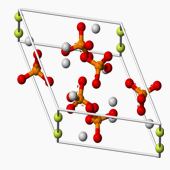Quantum Dynamics of Nuclear Spin Systems

To specify the positions and velocities of N classical particles moving in 3 dimensions, we need to know 6N numbers. That can be a lot of information when N is large, but it's nothing compared to specifying the state of N quantum particles, which requires a complex-valued function on a space with 3N dimensions.
A classical bit is simpler than a classical particle; it can only have the value 0 or 1. To specify a string of 30 ones and zeros I could give you a single integer between 0 and 1,073,741,823. But to fix the state of 30 qubits (quantum bits), I'd have to tell you 1,073,741,823 complex numbers, a probability amplitude for every possible 30-bit binary number. The quantum world is a big place, with plenty of room for mystery and discovery.
We use solid-state nuclear magnetic resonance (NMR) to explore the quantum dynamics of nuclear spins in crystals. Crystals are periodic collections of atoms, every atom has a nucleus, and most nuclei have spin. The common mineral fluorapatite contains phospate anions, calcium cations and linear chains of fluorine anions (green in the figure above). Every fluorine nucleus is a spin-1/2 particle with a magnetic moment, so this is a system of interacting qubits. Our NMR experiments can be thought of as "quantum simulations," analog computations designed to elucidate the properties of precisely defined quantum systems. Learn more.
The Air-Jet Acoustic Amplifier in Flutes

Edward U. Condon, recalling the first days of the MIT Radiation Lab:
I also remember one of those very earliest anecdotes when we first started in, about the first week: we were all sitting around with one of those dissected magnetrons just cut apart, with that resonant cavity structure of a bunch of circular cavities arranged around a main central circular cavity, and trying to figure out how on earth this thing could work as an oscillation generator. Rabi said, "Oh, it's very simple; it's just a kind of a whistle." And I said, "Okay, Rabi, how does a whistle work?" And he couldn't explain that either. So we had a great time, trying to figure things out in those days.
With the Battle of Britain raging and an urgent charge to develop practical microwave radar systems, one imagines that Rabi and his colleagues did not linger over the puzzle of how air jets excite oscillations in flute-family musical instruments. But today, magnetrons and ther ilk can be analysed in exquisite detail, while the 9000 year old human technology of the flute is still understood only in qualitative terms. Taking inspiration from microwave waveguide techniques developed at the Rad Lab during WWII, we have built an Acoustic Vector Network Analyzer (AVNA), the acoustic analog of the microwave VNA, and are using it to reveal the secrets of the air-jet amplifier in recorders, flutes, organ flue pipes and other flute-family musical oscillators. Learn more.
